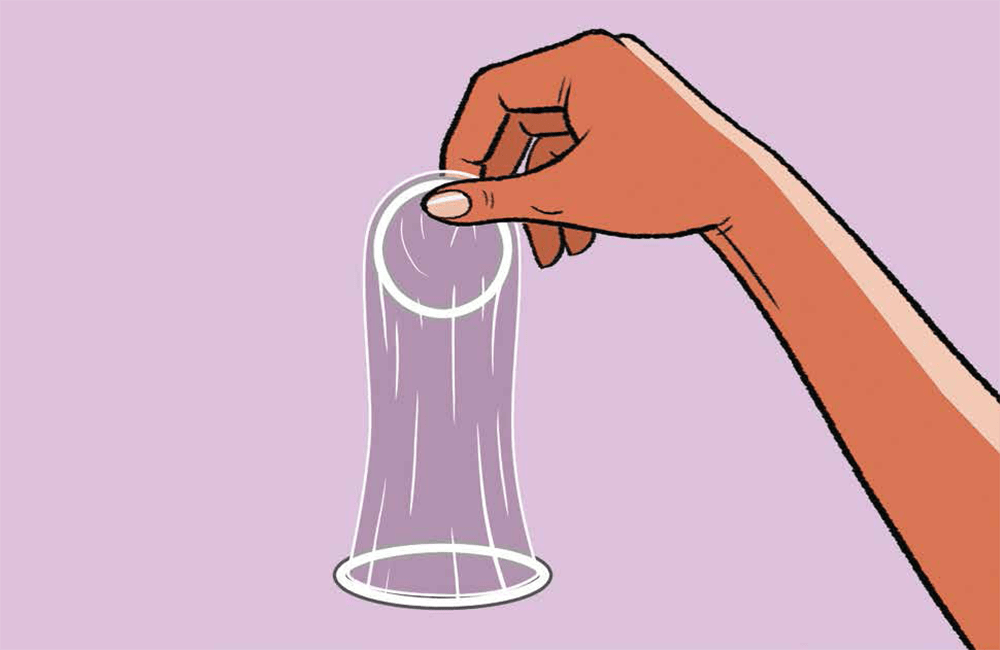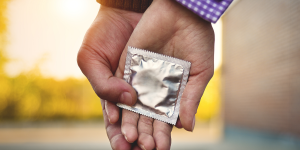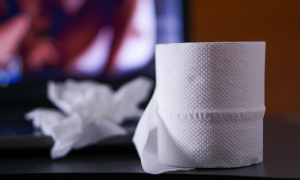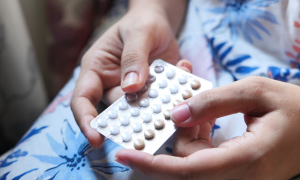
March is Sexual Pleasure Month—Celebrate it with Us!
March is Sexual Pleasure MonthCelebrate it with Us! Sex is good for you! Our bodies thrive on the chemicals released during orgasm, so a healthy sex life is part of
Currently, condoms are the only widely available, proven method for reducing transmission of HIV and other sexually transmitted infections (STIs) during sex. Condoms work. Condoms work best when you know some basic facts and understand how to use them. The facts on this page will help you have a better idea of how to use condoms correctly and protect your (and your partner’s) health.
External condoms are condoms that are worn on the penis. They are inexpensive, easy to find, easy to use, and really, really effective against HIV, chlamydia and a lot of other STIs when used consistently and correctly.

The internal condom is a nitrile pouch that fits inside the vagina. It has a soft ring on each end. The outer, larger ring stays on the outside of the vagina and partly covers the labia (lips). The inner ring fits on the inside of the vagina, somewhat like a diaphragm, to hold the condom in place. The internal condom can also be used in the rectum for anal sex.

The internal condom should be inserted before contact between the penis and the vagina or rectum. It can be inserted anywhere from immediately before to up to 8 hours prior to intercourse—allowing time to plan ahead. Another advantage of the internal condom—it stays in place whether or not the penis maintains an erection. Due to it’s outer ring, this type of condom also offers better protection from herpes and HPV which can be spread from skin-to-skin contact.

March is Sexual Pleasure MonthCelebrate it with Us! Sex is good for you! Our bodies thrive on the chemicals released during orgasm, so a healthy sex life is part of

The number one complaint of women that I see for sexuality counseling is that they have no libido – zip, gone, disappeared. Contrary to what many of us assume, this happens to women of all ages and levels of love, attachment, and attraction to their partners.

Don’t be shy to talk with your partner about safer sex and condoms: For both of you, this is one of the most important conversations you can have. It’s also one of the smartest!

There is another update to the ongoing court battle over mifepristone, one of two drugs used in most medication abortion.

A new paper suggests that there are biological and evolutionary reasons that we masturbate and looks to our ape ancestors for evidence. There is evidence starting around 40 million years ago that the ancestors of all monkeys and apes did indeed masturbate.

An FDA advisory panel voted unanimously last week that Opill, a progestin-only birth control pill, should be available over the counter.
ASHA believes that all people have the right to the information and services that will help them to have optimum sexual health. We envision a time when stigma is no longer associated with sexual health and our nation is united in its belief that sexuality is a normal, healthy, and positive aspect of human life.
ABOUT
GET INVOLVED
ASHA WEBSITES
GET HELP
© 2024 American Sexual Health Association